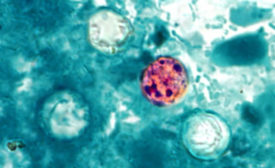Contamination Control
Predictive Modeling for Food Safety and Quality of Meat Products
When determining shelf life for meat products, the use of predictive modeling can help prevent spoilage and preserve freshness
December 21, 2021
Foodborne Parasites: An Insidious Threat to Food Safety and Public Health
Often neglected in risk assessments, foodborne parasites deserve more scrutiny—and prevention
October 18, 2021
Op-Ed: FDA Needs to Act Now on Toxic Metals in Baby Food
Exclusive remarks from Congressman Raja Krishnamoorthi to Food Safety Magazine
June 21, 2021
Never miss the latest news and trends driving the food safety industry
eNewsletter | Website | eMagazine
JOIN TODAY!Copyright ©2024. All Rights Reserved BNP Media.
Design, CMS, Hosting & Web Development :: ePublishing










